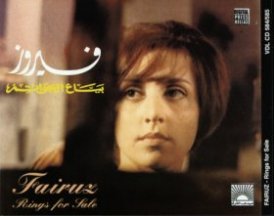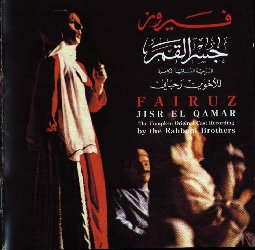The Plot:
It's the other face festivals in the kingdom of Selina. It's where everyone wears a mask and starts role playing. While the people are enjoying the festival, the king bans the wearing of the masks and ends the festivities. He does so because a prophecy tells that a princess will arrive to the kingdom wearing a mask and that she is the one the king should marry. His plan would help identify the princess since she will be the only one with a mask. The people, willingly and for the sake of their king, end the festivals.
Hala and her father arrive to the kingdom from a faraway place called Daraj Ellouz trying to sell Masks. They don't find any festivities. And so the father goes to the local bar leaving his daughter to sell the masks and bring him the money. The people
realizing that Hala is a stranger with a mask, think that she is the princess. The astronomer also confirms their theory. Hala gets confused, and they take her to the palace.
In the palace, they give her a new dress and present her to the king. Hala tells them her story and to prove she's telling the truth, she tells them about her father. The king sends some soldiers to the bar to bring Hala's father and offers Hala to await her father in the palace but she prefers to stay in the square.
When her father returns, they ask him if Hala is his daughter and he says she's not. The soldiers go to tell the king what happened. When Hala asks her father why he denied that she's his daughter, he tells her that he knew that if he says she isn't, she is going to be the princess and marry the king. He wants her to be wealthy and to live a better life than the one she has back home. Hala doesn't appreciate her father's wills and tells him to go back and drink then come back, perhapes then he'll say the truth. But then it was too late.
Hala stays with Saheriyah who ever since Hala's arrival and even earlier has been dreaming on inviting the princess to live with her and share her cloths and food. The king announces forty nights of feasts for the wedding. Later, the king's men and women all demand to meet with Hala. She tells them she won't marry the king. But even though they doubt or even know she is not a princess, they ask her to marry the king so that everyone could get a share from the feast. They even offer to conspire with her so that she, and they, can later exploit the king for their wants, but she asks them about love. Hala tells them that as they claim she is a princess, then the power that entails would give her the choice of refusing the marriage.
The king happy as ever asks for the princess and is told that she is getting ready for the wedding. The beggar, however, stands out and discloses the truth that Hala doesn't wish to marry him. He meets with the king in private and convinces him that not everyone wants to become a king, and happiness can be easily found. The king borrows the beggar’s cloths and goes to meet Hala. They talk to eachother. When he asks her, while pretending to be a beggar, why not marry the king and exploit him. She tells him she's not interested but that's what the King's servants asked her to do. Then she realizes she is talking to the king. The king too realizes the truth about his city that his men has been hiding from him. It ends with Hala departing the city.
Quick Notes:
I like fantasy worlds very much and this play is set in a kingdom called Selina and from the start of the play, it captivates you with enchanting music and an interesting festival in which people wear masks and spend the night role playing. Then come twists and turns in which the story develops into the fable that it is.
Unlike almost all other plays, the second introduction is a few minutes into the second disc. Also, the songs on each disc are crammed into one track. The booklet only contains the track listings in Arabic and English as well as a few lines from the play.
Credits:
Fairuz ... Hala
Nasri Shameseddin ... El Malek
Huda ... Saheryyieh
Elie Choueiri ... Habb Eryyh
Mohamed Merhi ... El moustachar
Joesph Nassif ... El Araaf
William Haswani ... Eshehad
With Melhem Barakat.
Written by the Rahbani Brothers and directed by Sabri Sharif.
Album Tracks:
Disc 1 (52'45")
Listen to : Listen to : Shayef El Bahr Shou Kbir
1. Overture
2. Sahriye Faouk Sahriye
3. Tall El Eid
4. Bi Amr El Malek
5. Ya Ahali Selina
6. Ya Zahrat El Leyl 7. Jayine Ala Sahet Selina
8. Ya Bayyi Ya Habb Erryh
9. Lala Yaba Lala
10. Hiyyi Hiyyi
11. Herrass El Madina
12. Ya Mkassat
13. Kltely El Meraye
14. Douckoul El Malek
15. Metl Ma Enhaka
16. Dakket Ala Sadry
17. Habibi Baddoul Amar
Disc 2 (55'35")
Listen to : Shayef El Bahr Shou Kbir
1. Tessad Fiha
2. Arreb Ya Moustashar
3. B'temshou Shouway
4. Fouti Ala Bouyoutna
5. Daraj El Laouz
6. Introduction Part 2
7. Nami Ya Sabiyeh
8. Harab El Eid
9. Ya Shehad El Madina
10. Ya Hassreti Alayya
11. Be'adelha El Be'addel
12. Sahranin Ou Mabsoutin
13. Heyk B'tenkirni Ya Bayyi
14. Ana Bentak Ou Enta Bayyi
15. Ya Ahali Selina
16. Baddi Abel El Amira
17. Shayef El Bahr Shou Kbir
18. Ya Ahali Slina Emeltouni Amira
19. Oumou Rkoussou Ou Frahou
20. El Malek Ou Eshehad
21. El Malek Ou Hala
22. Rayhin Min Sahet Selina
Total time 108'10" - VDLCD 536/537





